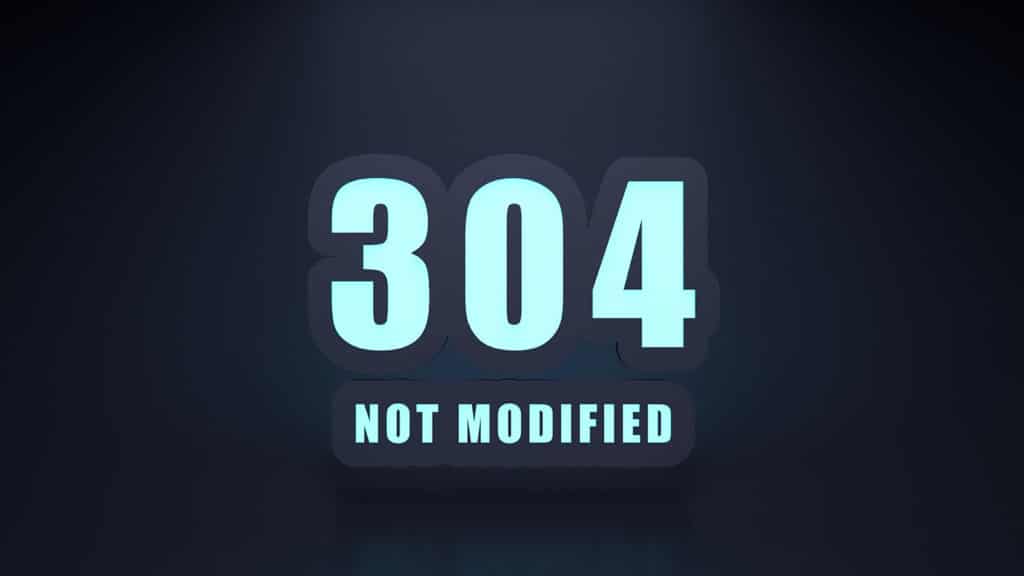Navigating the world of HTTP status codes can sometimes feel overwhelming, but understanding these codes is vital to optimizing web performance and user experience. In this guide, we’ll delve into one of these crucial status codes: the 304 Not Modified response. From understanding what it is and why it’s important to learning how to manipulate it according to your application’s needs, this comprehensive look will illuminate the pivotal role that this HTTP status code plays in data transfer and web application efficiency. As you proceed through the sections, you’ll gain insights into bandwidth usage, load times, server load, and effective version management, all anchored in the 304 Not Modified status code. So, whether you’re a developer seeking to fine-tune your application’s performance or just someone keen on understanding the behind-the-scenes operations of the internet, this guide is for you. Let’s get started and decode the mysteries of the 304 Not Modified response.

Table of Contents
What is 304 Not Modified Response?
The “304 Not Modified” response is a status code that a server can return in response to a HTTP request. It’s used to tell the client (e.g., the web browser) that the requested resource has not been modified since the last time it was requested, so the client can use its locally cached version of the resource instead of downloading it again from the server.
The process works like this:
- The client requests a resource from the server, and in that request it includes an If-Modified-Since header or If-None-Match header. These headers tell the server when the client last downloaded the resource, or the ETag value of the cached resource, respectively.
- The server compares the date or ETag value in the request with the current version of the resource.
- If the resource has not been modified since the date or ETag value in the request, the server sends back a
304 Not Modifiedresponse. This response is generally empty because it’s telling the client to use its cached version of the resource. - If the resource has been modified, the server sends back a
200 OKresponse along with the new version of the resource.
The 304 Not Modified response is part of the HTTP caching mechanism, which can significantly improve the performance of web applications by reducing the amount of data that needs to be transferred over the network.
Why Is the 304 response code important?
The 304 Not Modified response code is essential for efficient web performance and enhancing the user experience. Here are some of the reasons why it is important:
- Bandwidth Reduction: The 304 response code helps reduce bandwidth usage. When a browser can use a locally cached version of a resource, it eliminates the need to download that resource again from the server. This is particularly beneficial for users with slower internet connections or data caps.
- Faster Load Times: Using cached resources can significantly speed up web page loading times, as the browser doesn’t have to wait to download resources from the server. This enhances the user experience, particularly on websites with lots of images, scripts, or stylesheets that don’t change very often.
- Reduced Server Load: By sending a 304 response, the server instructs the browser to use a cached version of the resource, reducing the server’s workload. This can be crucial in reducing server costs and managing traffic effectively, particularly for high-traffic websites.
- Effective Version Management: The 304 response also ensures that the client sees the most recent version of the resource that’s valid according to its local cache. If a resource has changed on the server since it was last cached on the client, the server will send a normal 200 OK response with the updated resource. This ensures clients see updated content when it’s available while still benefiting from caching when the content hasn’t changed.
- Conserving Resources: For mobile users, using cached resources can save battery life and data usage, improving the overall browsing experience.
Overall, HTTP caching and the 304 Not Modified response can dramatically improve web performance, user experience, and cost-effectiveness of server resource usage.
Where do I modify the 304 response code?
The 304 Not Modified status code is part of the HTTP response generated by your server. To modify or manage the conditions under which it is sent, you would typically do so in your server configuration or application code, depending on your particular setup.
- Server Configuration: In server software like Apache or Nginx, you can often configure caching behavior at a high level. This might involve setting cache-related HTTP headers such as
Cache-Control,Expires,Last-Modified, andETag. For example, in Apache, you might use modules like mod_expires or mod_headers to manage these headers. Check your server’s documentation for more specific information. - Application Code: In the application code itself, whether it’s written in a language like Python, JavaScript (Node.js), PHP, etc., you have granular control over HTTP responses. When your application responds to a HTTP request, you can set the response status code and headers directly. This allows you to implement more complex logic for deciding when to return a
304 Not Modifiedresponse. How to do this specifically would depend on your programming language and the web framework you’re using.
In general, the process for deciding to return a 304 Not Modified response involves:
- Receiving a request that includes an
If-Modified-SinceorIf-None-Matchheader. - Checking whether the requested resource has been modified since the date or ETag value provided in the request headers.
- If the resource has not been modified, returning a response with a status code of
304 Not Modified. - If the resource has been modified, returning a normal response with the new version of the resource.
Remember, proper management of caching behavior and HTTP responses can significantly improve your application’s performance, but it can also be complex. Be sure to thoroughly test any changes to ensure you’re getting the desired behavior.
FAQ
Can I edit the 304 response code in CloudFlare?
Published on: 2023-07-27
Updated on: 2024-01-02